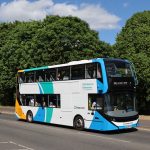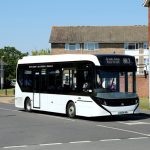The Intalink promotional vehicle initiative shows just what can be achieved at relatively low cost.
Here in Cambridgeshire we have almost entirely Cambridgeshire County Council (CCC) funded bus routes, all of which run at a loss, some dramatically so. We are continually told there are no funds available for promotion.
Consequently, these vital, mostly rural transport links are under permanent threat.
Particularly galling is the complete neglect of roadside infrastructure. Apart from the shabby appearance of flags, shelters and broken timetable cases, most of these rural services are almost invisible.
For the last year or so, I and fellow campaigner John Wakefield have been trying to improve the image of these routes by fixing new flags, renovating cases and printing new timetables. It’s a mammoth task for a couple of retirement age guys and the expense is considerable.
We have been told by CCC that our efforts are appreciated but no offers of financial support have been made. We have, however, had some success where Parish Councils have made generous donations.
How refreshing it would be for CCC to step up to the plate and provide a similar promotional vehicle to the Hertfordshire one, and make some funds available.
Quite soon, responsibility for transport infrastructure in Cambridgeshire will pass to the Cambridgeshire and Peterborough Combined Authority under the leadership of Mayor James Palmer. Mayor Palmer is promoting the Cambridge Autonomous Metro scheme, set to cost some £4bn, a figure which will inevitably rise. The nature of such a project means that rural and outlying areas of the county will not benefit. It will continue to be necessary to use cars to access the system.
The basic framework of a rural bus network still exists. It would make good sense to promote its use now, thus reducing subsidies and cutting private car use – a stated aim of the Council.

























